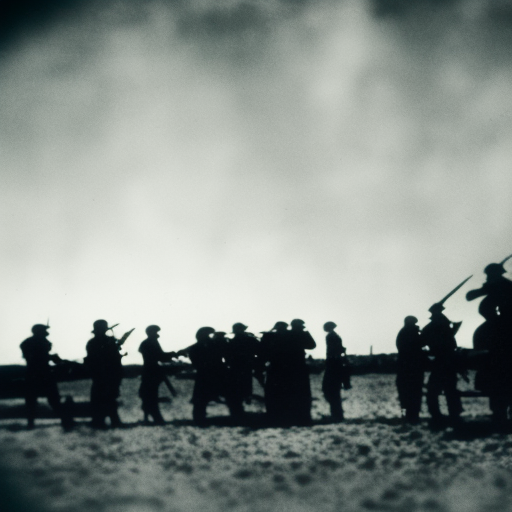Battle of Quatre Bras: A Key Engagement in the Napoleonic Wars
The Battle of Quatre Bras was a significant engagement that took place on June 16, 1815, during the Napoleonic Wars. It occurred just two days before the famous Battle of Waterloo and played a crucial role in shaping the outcome of the conflict. The battle was fought between the French under the command of Marshal Michel Ney and the Anglo-allied forces led by the Duke of Wellington.
Background:
After Napoleon Bonaparte’s return to power in France, following his exile on the island of Elba, the European powers formed a coalition against him. The Duke of Wellington, an experienced British general, was appointed as the commander of the Anglo-allied forces. Meanwhile, Napoleon aimed to defeat the coalition armies before they could fully unite against him.
The Battle:
The Battle of Quatre Bras took place in present-day Belgium, near the crossroads of Quatre Bras. The French forces, numbering around 20,000 men, aimed to capture the strategic position and prevent the Anglo-allied forces from joining forces with the Prussian army. The Anglo-allied forces, consisting of approximately 17,000 troops, were tasked with holding their ground until reinforcements arrived.
The battle began in the late morning when the French launched an attack on the crossroads. The initial French assault was successful, pushing back the Anglo-allied forces. However, the timely arrival of British reinforcements, including the famous Highland Brigade, helped stabilize the situation. The battle raged on throughout the day, with both sides launching attacks and counterattacks.
Key Moments:
One of the key moments of the battle occurred when the French captured the farmhouse at Gemioncourt, which provided them with a strong defensive position. The Anglo-allied forces made several attempts to retake the farmhouse but were unsuccessful. The fighting around Gemioncourt was fierce and resulted in heavy casualties on both sides.
Another crucial moment came when the Prussian army, under the command of General Blücher, launched an attack on the French forces at Ligny, a few miles away from Quatre Bras. This diversion of French troops to Ligny weakened Ney’s forces at Quatre Bras, preventing him from achieving a decisive victory.
Outcome:
The Battle of Quatre Bras ended inconclusively, with neither side gaining a clear victory. However, the Anglo-allied forces successfully held their ground and prevented the French from achieving their objective of preventing the coalition forces from uniting. The battle allowed the Duke of Wellington to maintain a strong position and prepare for the upcoming Battle of Waterloo.
The Battle of Quatre Bras was significant because it delayed the French advance and allowed the Prussian army to regroup. This delay proved crucial in the outcome of the Battle of Waterloo, which took place just two days later. The defeat of Napoleon at Waterloo marked the end of his reign and the Napoleonic era.
In conclusion, the Battle of Quatre Bras was a pivotal engagement in the Napoleonic Wars. It showcased the skill and determination of the Anglo-allied forces under the command of the Duke of Wellington. Although the battle ended inconclusively, it played a crucial role in shaping the outcome of the conflict by delaying the French advance and allowing the coalition forces to unite. The Battle of Quatre Bras set the stage for the decisive Battle of Waterloo, which ultimately led to Napoleon’s downfall.












